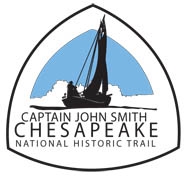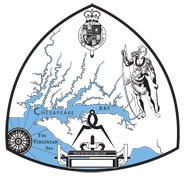 For 100 years, the National Park Service has preserved America’s special places “for the enjoyment, education, and inspiration of this and future generations.” Celebrate its second century with the Find Your Park GeoTour that launched April 2016 and explore these geocaches placed for you by National Park Service Rangers and their partners.
For 100 years, the National Park Service has preserved America’s special places “for the enjoyment, education, and inspiration of this and future generations.” Celebrate its second century with the Find Your Park GeoTour that launched April 2016 and explore these geocaches placed for you by National Park Service Rangers and their partners.
geocaching.com/play/geotours/findyourpark


Come on a journey to remember and commemorate the history and travels of Captain John Smith! Over four hundred years ago, Englishman John Smith and a small crew set out in an open boat to explore the Chesapeake Bay. Between 1607 and 1609 Smith mapped and documented nearly 3,000 miles of the Bay and its rivers. Along the way he visited many thriving American Indians communities and gathered information about this “fruitful and delightsome land.” In December 2006 the U.S. Congress designated the routes of Smith’s explorations of the Chesapeake as a national historic trail—the first national water trail.
Are you ready to follow in the wake of Captain John Smith? Visit sites along the National Historic Trail and learn about the native cultures and the natural environment of the 17th-century Chesapeake through the Captain John Smith Chesapeake Geotrail. The Trail provides opportunities for you to experience the Bay through the routes and places associated with Smith’s explorations. Caches will be located in museums, refuges, parks, and towns in Virginia, Maryland and Delaware along the rivers and creeks that Smith and his crew explored four centuries ago.
The Captain John Smith (CJS) Geotrail launched June 4, 2011 with over 40 caches within Maryland, Virginia and Delaware. A trackable geo coin will be awarded to the first 400 geocachers, while supplies last, for locating at least 15 CJS caches. To be eligible for the coin, geocachers must download a passport from either the CJS Geotrail or Maryland Geocaching Society website. Geocachers must find and log at least 15 finds, record the code word from each cache on their passport and post a picture of themselve at each cache location. After discovering the 15 required caches, geocachers may have thier passports validated in person or via mail at the National Park Service, Chesapeake Bay Office located at 410 Severn Ave, Suite 314, Annapolis, MD 21403. Please refer to the passport for complete validation instructions.
Participating in the CJS geotrail is fun and we hope that many people join in. However, it is not a requirement for logging your find on this cache once you find the container.
You are seeking a traditional hide, located along the Bayview Lookout trail. This cache was placed with park approval. We ask that all cachers respect all parks rules and hours. Please no night caching!

Kiptopeke State Park encompasses 536 acres and is located on the Eastern Shore approximately three miles north of the Chesapeake Bay Bridge Tunnel. This park is sponsored by Coastal Virginia Wildlife Observatory and the U.S. Fish and Wildlife Service to study migratory birds along the Atlantic flyway each year mid-August through November. Additionally, this state park offers visitors a number of amenities, including a swimming area on the Chesapeake Bay, family lodges, tent/yurt/RV campsite areas, a fishing pier and boat launch, 4.2 miles of hiking/biking trails, a visitor center, gift shop and picnic shelters. A row of nine sunken concrete ships from World War II forms a breakwater and artificial fishing reef approximately 1500 feet offshore.
Kiptopeke is a Native American name meaning “big water. When Captain John Smith left Jamestown to explore the Chesapeake Bay in 1608, he met the King of the Accawmack Native Americans, and his friendly younger brother Kiptopeke. The site of Kiptopeke Beach was named Kiptopeke in honor of this friendly Indian.
In 1949 the land area included in today’s Kiptopeke State Park was owned by the Virginia Ferry Corporation and used through 1964 as the northern terminus for the Little Creek-Cape Charles Ferry Service. In 1950 the terminus opened after the completion of a $2.75 million pier, promoted as the world's largest and most modern ferry pier. Ferry service was discontinued in 1964 with the opening of the Chesapeake Bay Bridge Tunnel. In May 1992, the Virginia Department of Conservation and Recreation purchased the 375 acres from John Maddox, who operated the property as Kiptopeke Beach Family Resort. The park was opened to the public on Memorial Day weekend of 1992.
Today the state park offers many programs for visitors, including guided hikes, fishing clinics, canoe programs, beach bonfire programs, waterfront activities, a hayride, and weekly birding programs at the Environmental Education Center. Seasonal interpretive and educational programs focus on natural history, birding and bay ecology.

Thanks to Undrtker66 for helping with this hide and to the Maryland Geocaching Society for assisting with this project!